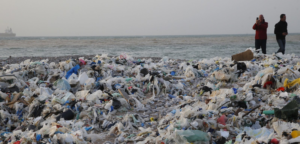 According to data that we were able to collect on the cities in California, the average annual production of waste per inhabitant is between 180 and 240 kg. This is about 1.5-2.5 times less than Long Beach.
According to data that we were able to collect on the cities in California, the average annual production of waste per inhabitant is between 180 and 240 kg. This is about 1.5-2.5 times less than Long Beach.
However, while the generation of waste is relatively similar whether we consider urban or rural areas of Californian counties, the difference is more marked in developing areas. In Los Angels county for example, the average household waste production is 213 kg per year per inhabitant, but we observe an average of around 320 kg per inhabitant per year for the city of Compton.
It should also be noted that the production of waste in the same city can undergo large seasonal variations (especially in tourist towns) or weekly (massive influx of waste from markets, for example). California observes an increase in the production of 25% domestic waste in summer for less touristy areas and up to 50% in tourist towns.
Regarding the composition of the waste, waste management research gives an idea of the average weight proportions. We actually observe few differences compared to the proportions encountered in industrialized areas if this is the presence of a significant fraction of inert. This fraction includes fine particles of sand, gravel, etc., which come from cleaning vegetables and house sweeping (particles that separate from the ground not always covered with tiling or brought back from unpaved roads).
Few statistical studies make a distinction between kitchen scraps (fruit and vegetable waste, leftover dishes cooked, etc.) and green waste (leaves, branches collected in the concession). These two important fractions constitute organic matter, which can also contain waste from small livestock and animal remains (offal, etc.). Note that plastics represent a low weight proportion of waste when the volume they occupy is relatively large.
Residents can use dumpster near me for renting a bin so they can discard their old unused items and junk. This way they reduce pollution, assuming they send it to a local landfill for treatment. Such methods of discarding garbage are becoming more popular on Long Beach.
The weight volume of household waste is around 0.2-0.3 kg / L for areas dry and increases, logically, up to about 0.5 for southern zones (higher humidity). As with the production of household waste, there are variations important between the composition of waste in rural and urban areas, and even according to the standard of living of the populations, the cities in development.
Some recycling research present a comparison between level zones different living conditions in the agglomerations of San Francisco and Long Beach. These comparisons between districts or counties show that the composition and production of waste is associated with the standard of living of the populations who generate it.
What’s more, the lifestyles of certain large cities seem to be getting closer and closer to current Northern cities testifying of a similar level of consumption. Accordingly, for these towns closely, or more than one million inhabitants, the collection means to be implemented will be closer to those used in rich countries. There are able to evacuate, every day, in the order of 500 to 1,000 tonnes of waste from the city.
